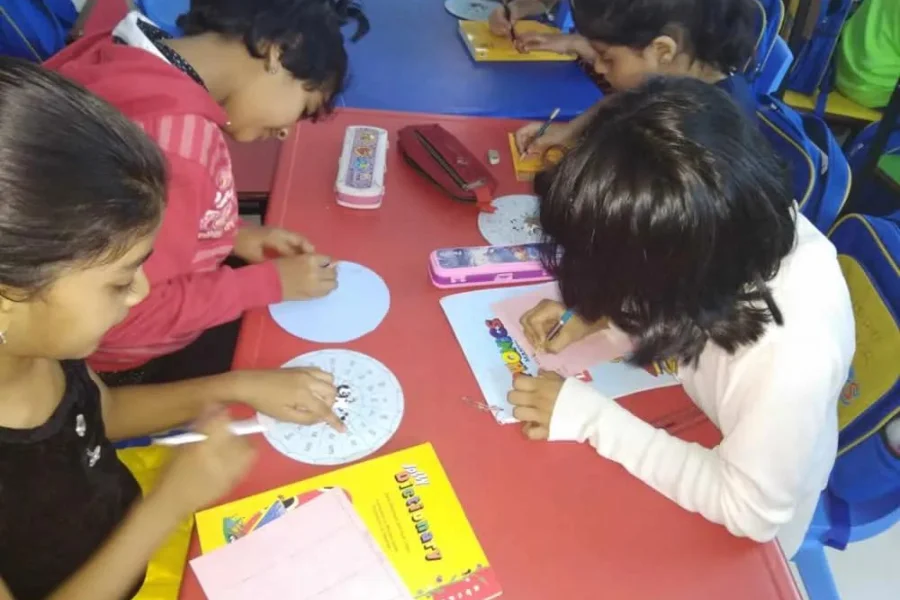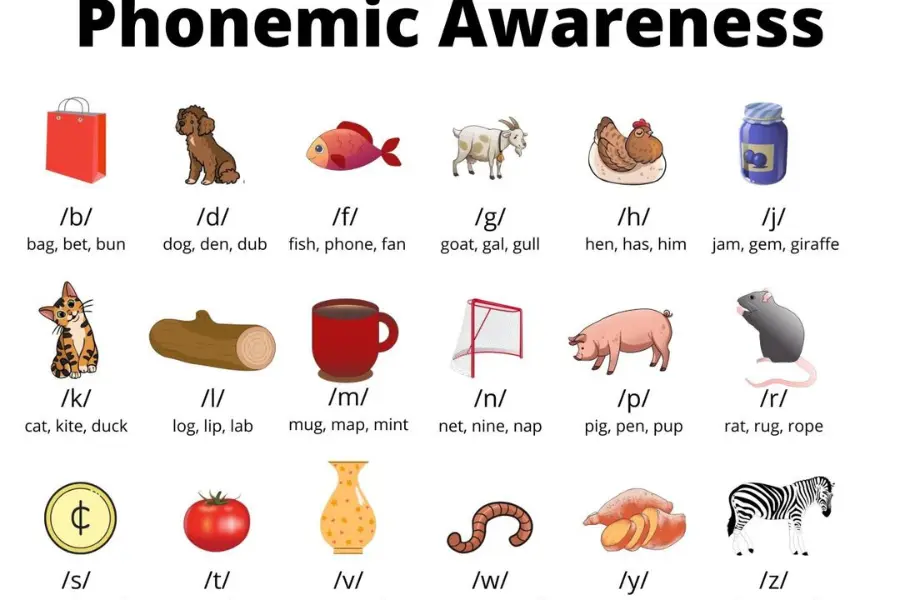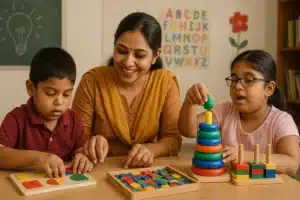
Source: freepik
It can be easy and enjoyable to Start Phonics at Home and help children build early reading skills. Letter Sounds, blending, and fun activities help create a supportive atmosphere for learning. Using a few simple steps, you can Start Phonics at Home and watch children grow into confident readers and spellers. You will understand the basics with this guide and provide hands-on tips to initiate the process to Start Phonics at Home.
It can be an enjoyable and rewarding process to Start Phonics at Home for both you and your child. The right approach can help your child develop vital reading and writing skills early on. Here’s a stepwise guide to support you to Start Phonics at Home, described in simple steps that you can easily follow.
For more details of Phonics Course Call / Whatsapp +919869866277/+919869546913
To Download Brochure of Phonics Course, Click Here!
Letter Sounds
The foremost step is to teach your child how to identify letters and relate them with the sounds they signify. Most Phonics Programs acquaint children with a small group of letters first. However, you can also use the old-style route of teaching the alphabet in order, beginning with letters like A, B, C, D, E, F, G, and so on. This familiar sequence helps children identify the alphabet as a whole while still permitting word formation as they advance through learning sounds. Both approaches work well and can be tailored to a child’s learning style.
You can also help your child practice writing these letters using correct letter formation. Learning to say and write the Letter Sounds will reinforce their understanding.
Example: If your child is learning the letter ‘F,’ you can show them objects around the house beginning with ‘F,’ like ‘fan,’ ‘foot,’ etc.
Tip: Many songs and videos are available on YouTube that are designed to teach Letter Sounds in an entertaining, interactive way. Incorporating these will make learning Letter Sounds more entertaining for your child.
Blending Sounds
Once your child is acquainted with individual Letter Sounds, the next step is to teach them Blending Sounds together for word formation. Begin with simple CVC (consonant-vowel-consonant) words like ‘sit,’ ‘pan,’ ‘tap,’ etc. After this, proceed on to slightly intricate words like ‘plot’ (CCVC), ‘dish’ (CVCC), etc.
Example: After learning the sounds for F, U, and N, encourage your child to integrate sounds together to say the word ‘fun.’
Tip: Magnetic letters on the refrigerator are a great means for practicing Blending Sounds. You can place letters to form words and have your child sound them out. It is a stimulating, hands-on practice to engage children with phonics.
For more details of Phonics Course Call / Whatsapp +919869866277/+919869546913
To Download Brochure of Phonics Course, Click Here!

Source: phonicsmantra
Digraphs
Once your child has become skilled at single Letter Sounds and Blending Sounds, it’s time to introduce Digraphs, which are letter pairs that produce a single sound. Some common examples are ‘ch,’ ‘sh,’ ‘ng,’ etc., and vowel Digraphs like ‘ea,’ ‘oo,’ ‘ai,’ etc. With this, you can teach your child to read and write words like ‘hair,’ ‘soon,’ ‘thin,’ etc.
During this stage, familiarize ‘tricky words’ (or common exception words) like ‘he,’ ‘was,’ ‘they,’ etc. These words don’t follow typical phonics rules and need to be learned by heart.
Example: You can introduce your child to the word ‘shop’ and explain how the ‘sh’ sound is different from the individual letters.
Tip: Phonics flashcards are helpful at this stage. You can use them for games like “Which sound is missing?” or for making new words.
Alternative Graphemes
At this point, your child will start learning that the same sound can be written in multiple ways. For instance, the ‘ai’ sound in ‘rain’ can also be written as ‘ay’ in ‘day,’ or ‘a_e’ in ‘make.’ Alternative Graphemes are a more progressive but important concept for their advancement in phonics.
You’ll also teach alternative pronunciations for the same graphemes. For instance, the ‘ea’ in ‘sea’ is pronounced differently in ‘head’ and ‘break.’
Example: You might show your child how the ‘ai’ sound is used in different words like ‘rain’ and ‘day’ and help them spot the patterns.
Tip: Reading to your child is especially important during this stage. As you read stories, let your child read one sentence per page using their phonics skills to sound out new words. It’s a great way to exercise and enjoy phonics together.

Source: vocus
Fluency and Accuracy
At this stage, your child can read and write independently, so the focus moves to improving Fluency and Accuracy. Your child should be able to read familiar words without sounding them out and should be able to employ their phonics awareness to tackle foreign words. At this point, they will also begin comprehending more intricate spelling rules, such as prefixes, suffixes, silent letters, etc.
Example: Encourage your child to notice patterns in spelling as they read, like how the silent ‘e’ alters the vowel sound in words like ‘make,’ ‘bike,’ etc.
Tip: By regular everyday reading, your child will build speed, Fluency and Accuracy. Hearten them to read books that interest them and challenge them to keep improving.
With these steps, you’ll be able to Start Phonics at Home with ease. The secret is to be patient, make learning entertaining, and support your child’s advancement at their own pace. Through steady practice and engagement, your child will acquire strong reading and writing aptitudes, setting a solid groundwork for their education.
Online Phonics Teacher Training Course
An Online Phonics Teacher Training Course plays a key role in preparing educators and parents with the skills needed to Start Phonics at Home. With the growing awareness of early literacy, this Phonics Teacher Course provides an organized approach to teaching letters and sounds, making learning fun and impactful for children. Whether you’re a teacher or a parent ambitious to Start Phonics at Home, this training will give you the tools and knowledge to build a rock-hard foundation in reading and writing for young learners.
The Phonics Teacher Course covers essential facets of phonics instruction, from comprehending letter sounds to familiarizing blending and digraphs. It also highlights real-world strategies to involve children in reading activities that develop fluency and command over the language.
You can expect the following advantages by registering for an Online Phonics Teacher Training Course:
- Meticulous learning of phonics rules, including letter sounds, digraphs, alternative graphemes, etc.
- Practices to teach blending and segmenting words for reading and writing.
- Insights into using games, songs, and multimedia to Start Phonics at Home and make learning enjoyable.
- The Phonics Teacher Course provides guidance to Start Phonics at Home and support children in mastering tricky words and irregular spellings.
- Training on how to measure children’s development and address individual learning needs.
Vidhyanidhi Education Society’s (Govt. Regd.) well-structured Online Phonics Teacher Training Course prepares educators and parents to Start Phonics at Home with confidence.
You will be well acquainted with effective phonics teaching approaches by the end of the Online Phonics Teacher Training Course, ensuring children develop robust reading and writing skills in a fun, entertaining way.
Ready to make learning fun? Join Vidhyanidhi’s Phonics Teacher Course today!
For more details of Phonics Course Call / Whatsapp +919869866277/+919869546913
To Download Brochure of Phonics Course, Click Here!
FAQs
How to be Professional Phonics Teacher?
To become a professional phonics teacher, complete a certified phonics training course, gain real-world teaching understanding, and constantly update your phonics techniques.
How long does it Take to Become Phonics Teacher?
Becoming a phonics teacher typically takes a few days, depending on the course structure and the time you dedicate to training and practice.
Where to get Guidance to Start Phonics Classes at Home?
You can get expert guidance to start phonics classes at home through Vidhyanidhi Education Society’s Phonics Teacher Training Course, designed to help you teach with confidence.



